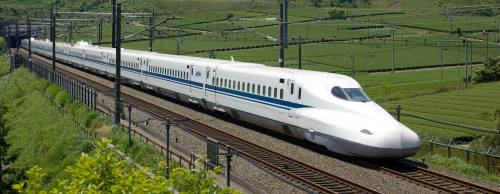Any discussion about station stops and corridors included or removed for consideration for the proposed Houston-to-Dallas high-speed rail is premature, according to a spokesperson with the Federal Railroad Administration.
Michael Cole, a public affairs specialist with the FRA, said that while no corridors have been selected, no routes have been removed for consideration, either. That includes a route along I-45, he said.
“The FRA’s responsibility here is to make certain that the project meets all the federal regulations,” Cole said. “That being said, we work through the process one step at a time.”
A draft of an Environmental Impact Statement, issued by the FRA, needs to be published before alignments and stops are selected for consideration, Cole said. An EIS is required by the National Environmental Protection Act to analyze the environmental effect of projects like high-speed rail.
“All of the corridors are still a part of the proposal until we publish the DEIS, which will identify those corridors that will be part of the evaluation in the EIS,” he said.
In April, Texas Central Railway President Robert Eckels said a Hockley station near Hempstead Highway might be considered as a possible station stop. TCR is a private company that is responsible for bringing a high-speed rail system to Texas.
“There were public comments in the [planning] process suggesting a Hockley station,” Eckels said. “[A Hockley station] would make a good future addition to the system, but it is not currently in the plan. We have not moved that far yet.”
In regard to potential corridors for the rail line, Eckels said TCR plans to submit to the FRA alternative alignments along a utility corridor near Hwy. 290.
“One of our challenges is finding the stations that work for the economics of the project today while planning for the growth of the future to meet future demand and serve markets along that route,” Eckels said.
Eckels said it will be at least several months before a DEIS is released.
The FRA is in the early stages of the high-speed rail project process, which includes waiting for TCR’s proposal, Cole said. The FRA’s area of responsibility requires the agency to conduct the environmental reviews set forth by the National Environmental Policy Act, or NEPA
“The scoping is the very beginning of that environmental review process,” Cole said. “The very first step is to come to an understanding on what the project encompasses.”
He said the process of reviewing the high-speed rail project is complex.
“FRA is the lead federal agency for the [NEPA] review process for the Texas Central Railroad-proposed project, and we are in the very early stages of that review process,” Cole said.
Once the DEIS is issued, a public comment period will be held, which will include input from residents, affected school districts, counties and business owners, Cole said. The FRA does not offer a time frame.
“We hesitate to do that because every one of these projects is incredibly unique,” Cole said. “Our task is to make sure we apply the NEPA [standards] properly. And public input has a great deal to do with that timeline. We receive an incredible amount of information through the scoping process.”
The corridors in consideration for the high-speed rail project will be made public once the DEIS is published.
“When we put the DEIS on the street, it will lay out the corridors, take us further into the environmental process, and of those that aren’t in, [the report] will say why,” Cole said.




